
How do I encourage my patients to resume in-person visits? Likewise, how do I help my patients and staff feel comfortable with face-to-face appointments? What new experiences are my patients seeking? How do I promote and maintain my practice and business? Is it even appropriate to want to grow my business during this time? You may be asking yourself these questions as you and your patients navigate a ‘new normal’.
The world looks a little different these days, and I do not want to dismiss the challenges in implementing new policies and regulations to protect you, your staff and patients in the midst of a pandemic. I do want to highlight how you can balance patient care with opportunities to grow your practice.
‘The difference between who you are and who you want to be is what you do,’ asserts Charles Duhigg, author of The Power of Habit: Why We Do What We Do in Life and Business.1
There is no bigger opportunity than the present to clearly establish who and what you want to be, by making crucial decisions on the operation of your practice now. Merriam-Webster defines a habit as ‘a settled tendency or usual manner of behaviour,’ or ‘an acquired mode of behaviour that has become nearly or completely involuntary.’
Patients form habits through cues such as visits to a medical professional where they receive guidance or a prescription. A patient’s compliance to wearing a daily or monthly contact lens and adopting the appropriate lens care routine also contribute to forming habits. Those habits are reinforced as a patient follows your guidance and prescription. Habits require repetition and typically provide a meaningful benefit or payoff. The repetition, if maintained, helps to ingrain the habit into routine behaviour.
But, what happens to a habit when unforeseen or uncontrollable circumstances enter the picture? Covid-19 has disrupted daily life around the world, for example.
People in various parts of the world have been quarantined resulting in:
- Fewer trips to the shops
- Increased online shopping (which has impacted supply and demand, and shipping times)
- Interest and trial of subscription models
- Shoppers making trade-offs or substitutions, as many of their go-to products were out of stock
You are fully aware of the changes in how medical professionals see and interact with patients. You and your patients are managing change at an unprecedented level, including:
- Forced closure, impacting your ability to see patients in person and, in many cases, requiring a new operating model
- Reluctance of patients to make in-practice appointments even as quarantine is lifted
- The rise and demand of digital health services
- As healthcare is ever changing, there are routinely changes in medical plans and coverage for patients (in countries with private healthcare schemes) and this may also be true for practice subscription and/or care plans. For some it is hard to keep track.
Covid-19 has significantly disrupted patient habits. This creates a great opportunity for you, as your patients’ trusted eye care professional (ECP), to reinforce good habits and establish new ones – if you understand the changes in your patients’ behaviour, and quickly spot and respond to new data trends.
I would like to support you by sharing new data that demonstrates the resiliency of contact lenses and reveal opportunities for you to discuss innovative technology and changing needs with your patients. This research was conducted with 1,511 contact lens wearers in five countries, with the aim to understand how Covid-19 is affecting short- and long-term usage, purchasing habits, attitudes and behaviours.
As quarantine began, 43% of contact lens wearers stated that they were wearing their lenses less often.2 They listed reasons for this behaviour change as: not going out, not taking fitness classes and conserving their lens supply. However, a striking 90% who are wearing their contact lenses less state they will return to their ‘normal’ wearing habits within two to three months, if not sooner2 (figure 1). They also see you as their trusted authority for eye care and are open to learning more about lens options, tips and tricks.
As you reopen and rebuild your practice, I encourage you to consider five key and timely takeaways, which we will discuss in greater detail:
- Re-establish your credibility and the services you provide
- Reinforce the good habits that patients have maintained and seize the opportunity to establish or build new habits
- Recognise that not all of your patients are in the same place economically
- Identify your virtual engagement strategy
- Leverage your key suppliers and business partners
Re-establish your credibility and expertise
In many markets, more than 70% of contact lens wearers are likely to see their eye care professional (ECP) for all of their eye care needs.2 You are their source for knowledge and expertise. You are ‘the’ resource for their eye care needs. How will you activate your position as the patient’s trusted advisor? As a trusted authority, you are in the position to help solve several patient needs: convenience, confidence, credible information and endorsement of the contact lens that best suits a patient’s needs and lifestyle. Consider providing resources such as contact lens and eye care health tips and tricks that help establish your practice as a ‘one-stop-shop’ and you as the ECP that can help meet patients’ eye care needs.
Dry eye and ocular health is another opportunity for you to explore a patient’s changing eye care needs. For example, 41% of wearers surveyed have noticed an increase in dry eye symptoms during the pandemic.2 This is likely because they are spending more time in front of their screens, thanks to web calls and binge-watching their favourite programmes. Nearly 70% of these contact lens wearers prefer to visit an ECP to discuss dry eye or tired eye symptoms versus treating the symptoms themselves.2
Now is the time to over-communicate your brand and why patients should choose you. Remember, the more often we see something the more we will like it (exposure effect) and the more likely we will be able to remember or recall it. It is not a bad thing for your practice to be the first thing to come to mind when your patients think about vision and eye care needs.
Reinforce the good habits that patients have maintained and seize the opportunity to establish or build new habits
Recall, habits are formed by cues, which lead to repetition, which is most effective when it results in a reward, benefit or payoff.
In today’s environment, it is easy for patients to relax their eye care regimen, or cancel or delay vision appointments. How will you take the opportunity to reward and reinforce good habits, and recognise loyalty, such as patients who have remained compliant, or maintained their orders and appointments? Consider offering a personal thank you or discount and keep in mind that, whatever you choose to do, it is important to maintain and encourage your loyal patients and perhaps encouraging others to follow suit.
Another interesting point to consider is patient purchasing habits and behaviours. During this time, we would expect cost and how the contact lens wearers obtain their contact lens supply to fundamentally influence their long-term purchasing decisions. Survey data demonstrated that 94% of wearers have remained loyal to their current brand2 (figure 2), re-enforcing the principal of habit.
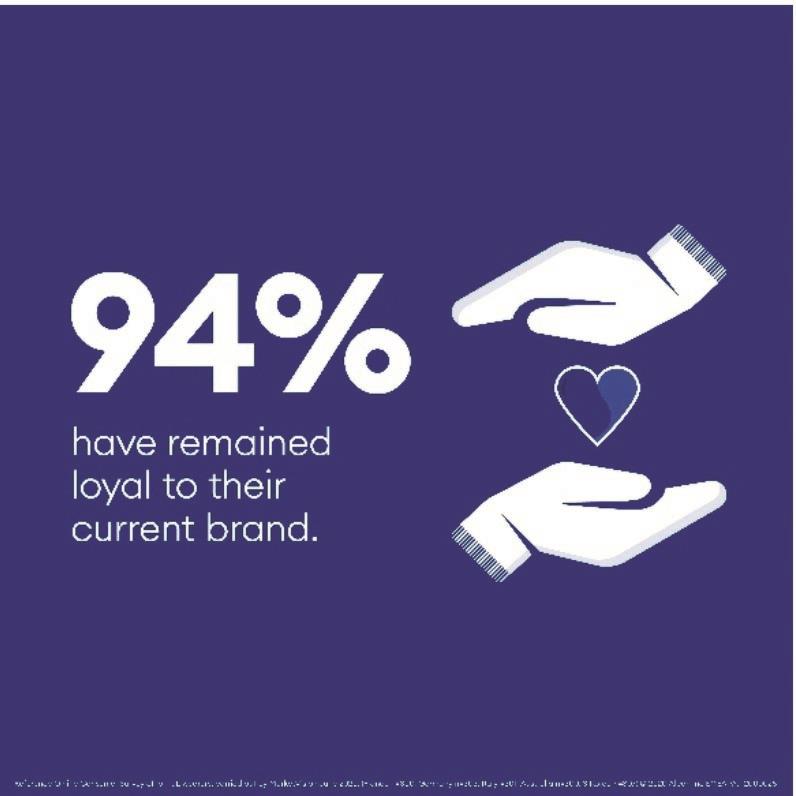 Figure 2
Figure 2
That said, 75% of contact lens wearers are open to talking to you about upgrading their current contact lenses and 71% are receptive to paying more for an innovative contact lens that offers additional benefits2 (figures 4 and 5).
Finally, many patients may have a heightened sense of concern around hygiene and compliance. Nearly 80% of contact lens wearers are displaying more diligent compliance behaviours such as hand washing and cleaning and changing out lenses more often2 (figure 3). As a result of Covid-19, many patients are taking a closer look at their product choices, and may be asking whether there is a healthier option or how or if new technology can help them to better balance eye care needs with good hygiene habits. This provides you with an opportunity to discuss daily contact lenses as a more hygienic option or as an option to help encourage compliance.
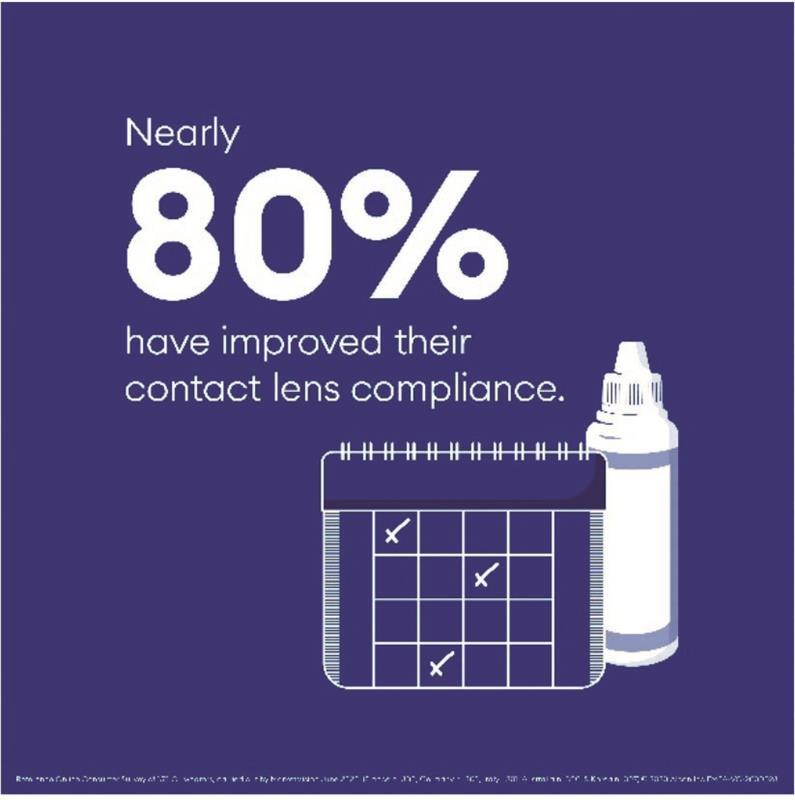 Figure 3
Figure 3
To build trust and maintain practice loyalty, you may wish to consider how you continue to reassure a patient’s good choice, and that they should continue to maintain their orders and proper wear schedule. Remember that 43% of those surveyed are wearing contact lenses less often due to Covid-19. Of those wearing lenses less often, 90% stated that they are likely to return to their normal wear schedule in the next two to three months.2 What better opportunity to engage patients and drive good habits?
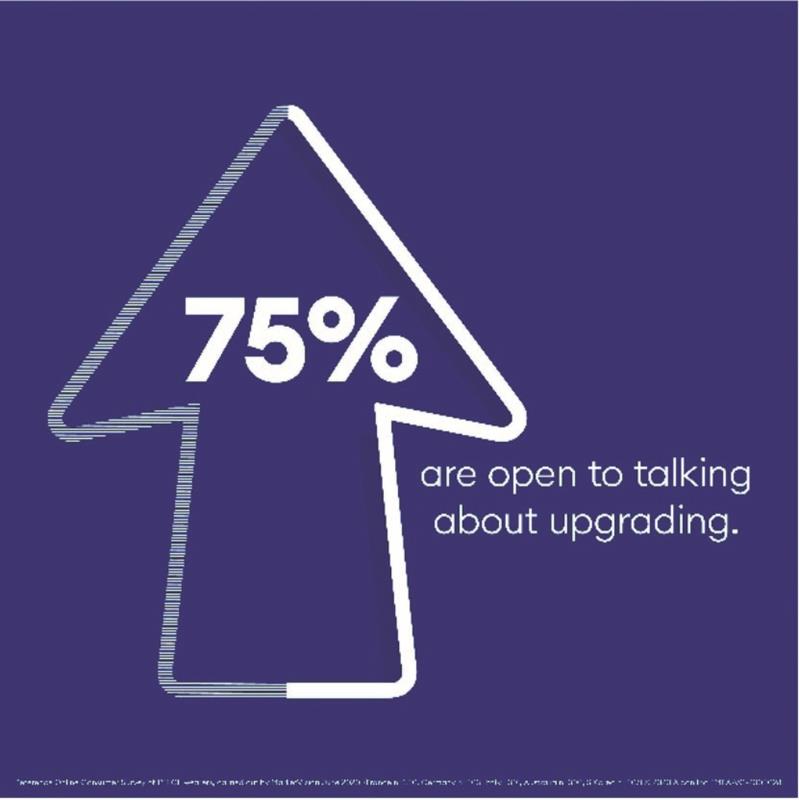 Figure 4
Figure 4
Recognise that not all of your patients are in the same place economically
It is also important that you realise price, or deep discounting is not the most important thing or answer for all patients.
Covid-19 has not impacted all people equally. It is critical to note that not everyone is struggling financially in tough economic times.
A Daily Mail survey in the UK, as well as a US survey3-5 (tables 1 and 2) show that there are primarily three different buckets of consumers:
- Those who are worse off as a result of Covid-19
- Those who have not experienced meaningful change
- Those who are better off as a result of Covid-19
 Table 1: Daily Mail survey May 23, 2020
Table 1: Daily Mail survey May 23, 2020
 Table 2: Perceived pandemic financial impact on US incomes
Table 2: Perceived pandemic financial impact on US incomes
In order to be successful and truly connect with your patients, you need to understand and speak the three languages of economics in a Covid-19 world:5
- Price for those who are struggling to maintain basic needs, and for whom money is an issue – perhaps they are out of work, or unable to work, or on reduced hours
- Value for those who do have some discretionary spending, and perhaps have experienced no meaningful changes in their economic status, but value is important in how they manage their discretionary income.
- Premium for those who actually may be better off during these times. Perhaps they are working from home, and now do not have travel expenses, or due to quarantines may not be stimulating the economy as they used to, and are ‘stockpiling’ their savings. These individuals still desire premium things, and have the means to afford them. In a recent Alcon survey, 71% of contact lens wearers cite that they are willing to pay more for an innovative lens2 and they were asked during the pandemic.
Identify your virtual engagement strategy.
There is a tremendous thirst for knowledge, especially as many patients now rely more heavily on online and digital solutions to meet their needs.
Does your practice have an effective virtual engagement strategy? As the world reopens, it is important to consider that many consumers may be hesitant to do in person appointments or visits. They may be fearful or have questions about the safety of face-to-face interaction. Perhaps they are working from home, or caring for an at-risk loved one.
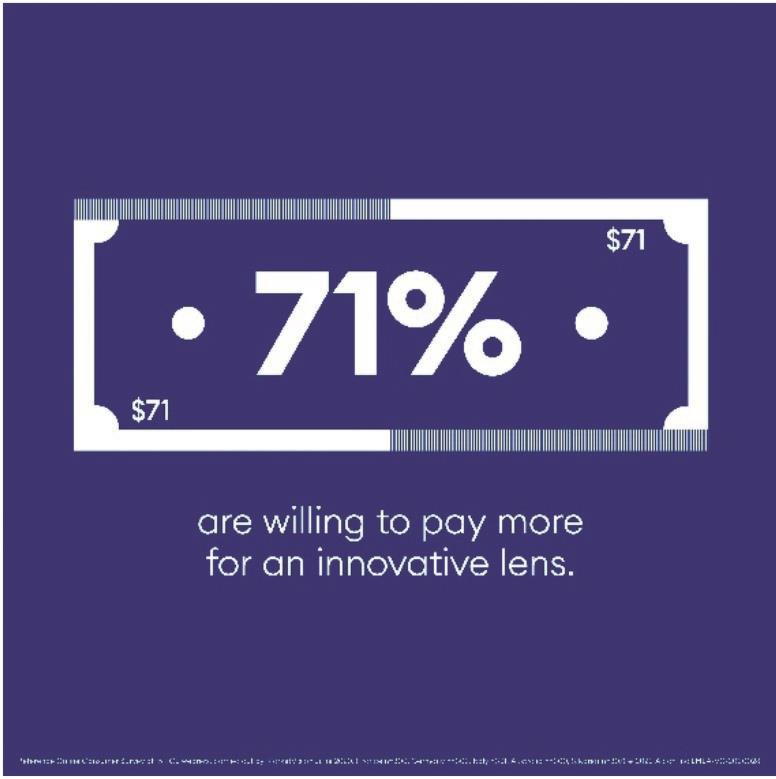 Figure 5
Figure 5
Online ordering options are attractive because they are easy, fast and convenient. When asked, nearly 80% of wearers said they would continue to purchase contact lenses through their ECP2 – more than half (46%) of these wearers stated would like to buy their lenses from their ECP online.2
It is not just about purchasing online. There is a strong request for virtual engagement for contact lens wearers as they wish to receive support digitally, whether that be by email, website or an app. Indeed more than 65% of contact lens wearers would prefer ECP engagement via a digital platform (figure 6).
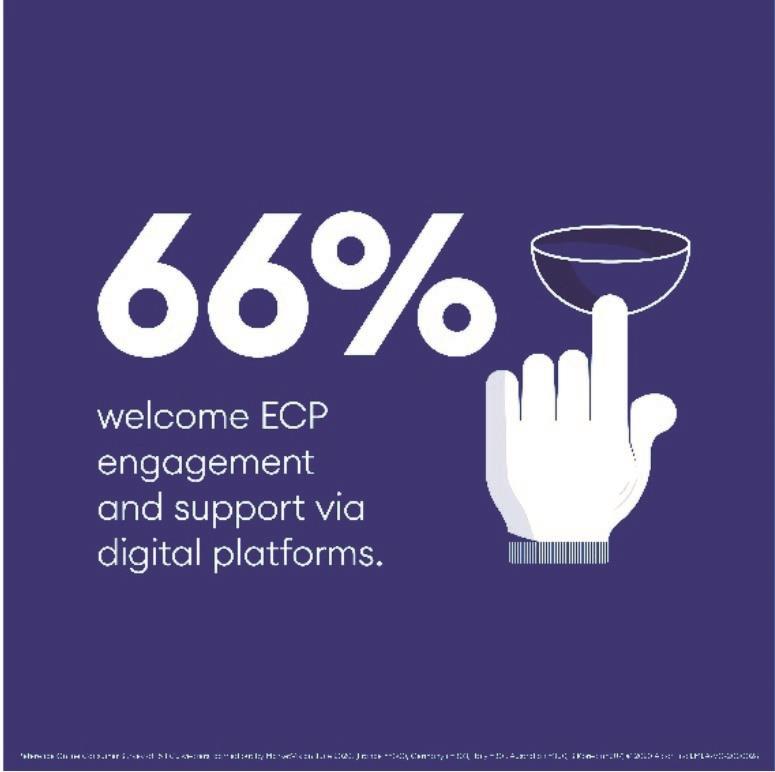 Figure 6
Figure 6
Purchasing platforms, combined with digital tips and support, could help you stay engaged in your patients’ care and offer a personal touch advantage over contact lens retail websites.
Leverage your key suppliers and business partners
You do not have to navigate our ‘new normal’ alone – leverage the strengths and resources of your key suppliers and business partners. For example, tap into information such as consumer segmentation, data around impact of Covid-19 on vision care, and emerging trends to strengthen your category knowledge and better meet patient needs. Or, perhaps take advantage of your partners’ online delivery platforms, and digital and social guidance and tools.
You have likely noticed that many retailers have adjusted their product mix to meet new demands and needs. In doing so, they maintain relevance and benefit to consumers. As you reopen, consider what products you will offer. Do you need to add products to cover practice gaps, or perhaps temporarily or permanently discontinue other products? Are you confident in discussing the latest contact lens and lens care technology? Do you have a way to assess how Covid-19 has affected your patients’ eye care needs? Take advantage of this time to hold crucial conversations with manufacturers who can help you continue to meet patient demands and needs.
In closing
Circumstances have forced patients to change their lifestyles and develop new habits. This is a defining moment for practices all over the world. Will you win or lose in this environment? How will you seize the opportunity to influence behaviour to strengthen relationships with patients, build trust and grow your practice? And what tools, resources and partners will you pull in to support you along the way?
Martin Polk is global director behavioural insights at Alcon.
References
- Duhigg, Charles. The Power Of Habit: Why We Do What We Do In Life And Business. New York: Random House, 2012. Print
- Online Consumer Survey of 1511 CL wearers, carried out by Market Vision for Alcon, June 2020. (France n=300, Germany n=303, Italy =301, Australia n=300, S.Korea n=307)
- JL Partners Survey, The Daily Mail, May 23, 2020
- FT-Peterson poll of 1,005 likely US voters, March 2020
- Tony Durham Consulting, Ltd – Alcon 5 Actions to Build Your Brand Presentation June 22, 2020
